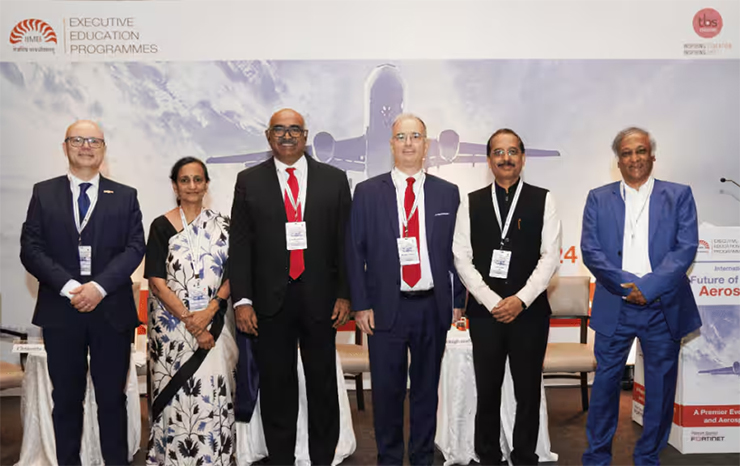
Bengaluru. The 2024 International Conference on the Future of Aviation and Aerospace, hosted by IIM Bangalore and Toulouse Business School France, provided a platform for industry leaders to delve into pressing issues and future trends. The event brought together over 300 senior executives from the aerospace and aviation sector.
The conference offered valuable insights into the evolving landscape of aviation with keynote addresses and expert panels covering topics from MROs to drones to talent management.
Highlighting the institution’s global reputation in business management, Director of IIM Bangalore, Professor Rishikesha T Krishnan welcomed participants. He expressed enthusiasm for hosting the conference, citing IIMB’s strong faculty expertise and student interest in the aviation sector. “Our General Management Programme for Aerospace and Aviation Executives is very well received by industry,” he remarked, reflecting on IIMB’s commitment to shaping the future of aviation.
In his opening remarks, conference chair, Professor G Shainesh highlighted the importance of industry transformation. “The purpose of the conference is to get a sense of where the industry is and where it is heading in terms of transformation and progress,” he stated, setting the stage for discussions on key challenges and opportunities facing the aviation sector.
The panel on ‘The Impact of Macroeconomic Environment on Aviation and Aerospace’ featured original insights from industry experts. Professor Chetan Subramanian highlighted the economic headwinds affecting the sector, drawing attention to the ramifications of events like COVID and geopolitical tensions. “The last time the Indian economy experienced contraction was in 1979. This is significant because India is a young economy and when it contracts, it grapples with unemployment,” he noted, shedding light on the sector’s vulnerabilities.
Emphasising India’s potential to enhance its contribution to the global aerospace supply chain, Dr Srinivasan Dwarkanath said, “India’s contribution is less than 1 per cent of the global aerospace supply chain. We ought to be at 10 per cent in 10 years.” He stressed on the need for strategic investments and capacity building initiatives.
Providing valuable insights into the differing growth trajectories of India and Japan in the aerospace sector, Kallappa Pattada stated, “Japan is heavily focused on sustainability while in India, we are still working at addressing a capacity crunch.” He also highlighted the sector’s diverse challenges and opportunities across regions.
The panel on the ‘Future of Global and Local Aviation Market’ offered perspectives on emerging trends shaping the industry. Dr Dwarkanath projected strong growth for Asia Pacific, particularly in developing markets like India and China. “Asia Pacific will have about 46 per cent of all new aircraft delivery over the next few years,” he predicted, pointing to the region’s growing significance in the global aviation market.
Defining the future of the airline industry, Sunil Bhaskaran highlighted key trends including customer-centricity and sustainability. “Asia Pacific will have about 46 per cent of all new aircraft delivery over the next few years,” he observed, emphasising the need for strategic innovation and adaptation in response to evolving consumer preferences.
Senior Advisor at McKinsey & Company, Amber Dubey offered unique insights into the future of the drone sector in India. “The aviation sector in India needs a huge round of applause for the way it responded to the pandemic,” he commended, acknowledging the sector’s pivotal role in crisis response and disaster management.
Panel discussions also explored themes such as sustainability, talent management, and cybersecurity, providing participants with a holistic understanding of the challenges and opportunities facing the aviation industry. The conference concluded with a renewed commitment to collaboration and innovation, underscoring the collective effort required to navigate the dynamic landscape of aviation in the years ahead.















